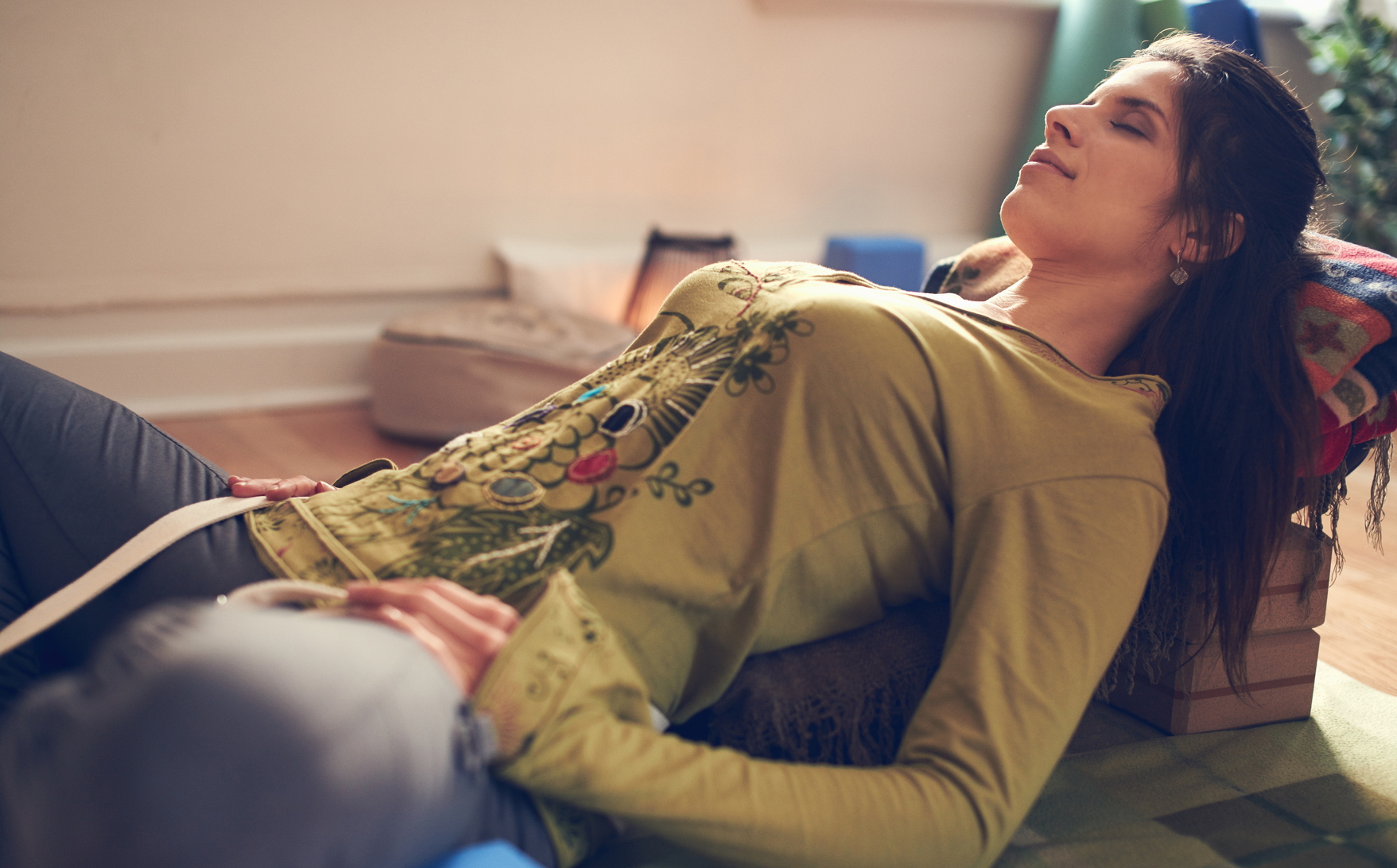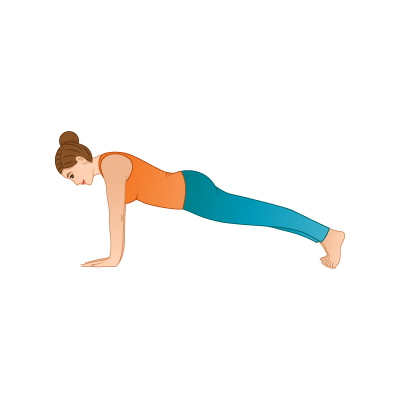How to Teach Restorative Yoga Classes
November 8, 2016 | 5 min read
A restorative yoga class typically involves 5-8 poses supported with props and held for anywhere from 10-15 minutes. Most restorative yoga poses are based on the practices of B.K.S. Iyengar and involve gentle twists, back bends and inversions, using props to support full relaxation of mind and body. Restorative yoga has many different applications and target markets. There are restorative yoga sequences for depression, insomnia, cancer, PMS, high blood pressure, stress and athletic injuries.
PROPS ARE KEY
The key to delivering a great restorative yoga class is props and plenty of them. Bolsters, blankets, eye pads and yoga chairs are essential gear for teaching and practicing this style of yoga. In a pinch, a fold-up chair covered with a blanket, rolled-up mats, a pile of blankets and a wall can stand-in as less expensive options. Equally as important is the environment. Aim to minimalize external stimulation, dimming the lights, shading windows and muffling extraneous noise with the soothing sounds of yoga music. It is best to choose instrumental tapes that blend music with harmonious sounds of nature, such as used in Zen Mediation or in spas.
SLOWER PACED CLASSES
The benefits of restorative yoga include: deep relaxation, mindfulness, increased flexibility, decreased anxiety, improvements in mood and a boost to the immune system are just some of the generic positives effects of practicing restorative yoga on a regular basis. To gain these students need to relax deeply. Restorative yoga is not like other classes where students can expect to move at a fast pace and sweat a lot. On the contrary in restorative yoga classes, students are expected to slow down, opening and stretching the body using “passive postures” in which the body is supported by bolsters, blankets and other props. In fact, the whole concept of restorative yoga is founded on the premise, that no “work” is involved. Typically, when we suffer from stress, it is because we have “overdone it”. The effects of stress include depression and chronic fatigue. Restorative yoga supports the healing process, allowing the mind and body to unwind and reinvigorate.
SEQUENCING A RESTORATIVE YOGA CLASS
The majority of Restorative yoga classes will begin in a supine position, allowing for the body to be fully supported by the floor and a prop. One of my favorite starting poses in supported easy pose. In this position, the student reclines back onto a bolster or folded blankets placed lengthwise, under the spine from neck to tail. The legs are crossed and arms open in a T-shape. Deep Yoga breathes and visualisations are practiced for 10 minutes before moving onto to gentle bent-knee twists with a bolster or blanket placed under the knees. Next the blanket or bolster are placed under the hips for supported bridge pose. From here it is an easy transition to supported inversions such as legs up the wall, or shoulder stand using a chair with the shoulders on a folded blanket, hips on the chair seat and legs on the chair back, or simply a bolster under the backs of the legs. Iyengar Yoga uses chairs as props for many advanced restorative poses, such as head stand, handstand and back bending. Restorative poses for cool down include child pose with a bolster between the legs and under the belly. This is a particularly good pose for alleviating back pain. For anxiety and insomnia, invite your students to sit sideways against the wall. Ask them to pivot around on their sit bones, before bringing their legs to rest against the wall. Place weighted blocks on the soles of their feet and eye bags for the eyelids. For extra support, you might place a rolled up blanket under the neck. Dim the lights and have them hold this pose for 10 minutes, relaxing the hips, back, legs, spine and eyes. Slowly, ask them to lower the feet, remove the weights and stretch into Savasana, covering them bodies with a blanket, socks or any other clothing needed..
EXTENDED SAVASANA
The last twenty minutes of restorative yoga may be spent into Savasana and/or Yoga Nidra. Yoga Nidra is the yoga practice for ultimate relaxation. Working from the feet to the crown top, students are instructed to relax the toe, foot arch, ankle and so forth. Once to the head, the Nidra takes the form of a guided-meditation, designed to encourage deep relaxation of mind as well as body. Yoga research has demonstrated the effectiveness of Yoga Nidra to improve conditions caused by anxiety and stress.
Many restorative yoga teachers include Chakra-Therapy, Tibetan bowls, gongs and chanting in their classes to help focus the mind and support a “yoga sleep” state, which is somewhere between sleeping and mediation. Deep breathing techniques accompanied by low lights, soft tones of voice and gentle adjustments are also typical techniques used by yoga teachers to induce deep relaxation.
Looking for more inspiration for your next yoga class? YogaClassPlan sequence builder gives you access to 7000+ shared class plans in your hands. You can create your own completely new class sequences by choosing from 500+ pose illustrations. Simply drag and drop poses to create your routine, add class plan details such as duration and level, and share the class plan with your students. Sign-up for a 15-day YogaClassPlan free trial today.
Brenda Hamlet is a RYT 200 yoga teacher and journalist. More information about Brenda can be found at https://www.facebook.com/brendahamletyoga
Posted in Methodology, Teaching Resources, Teaching Tips




